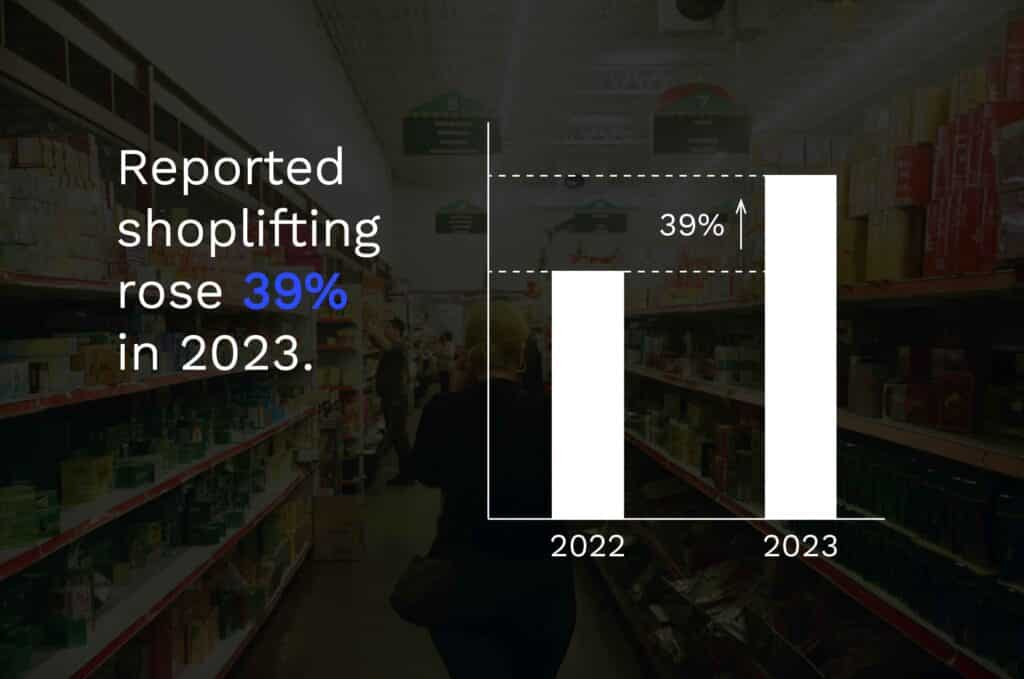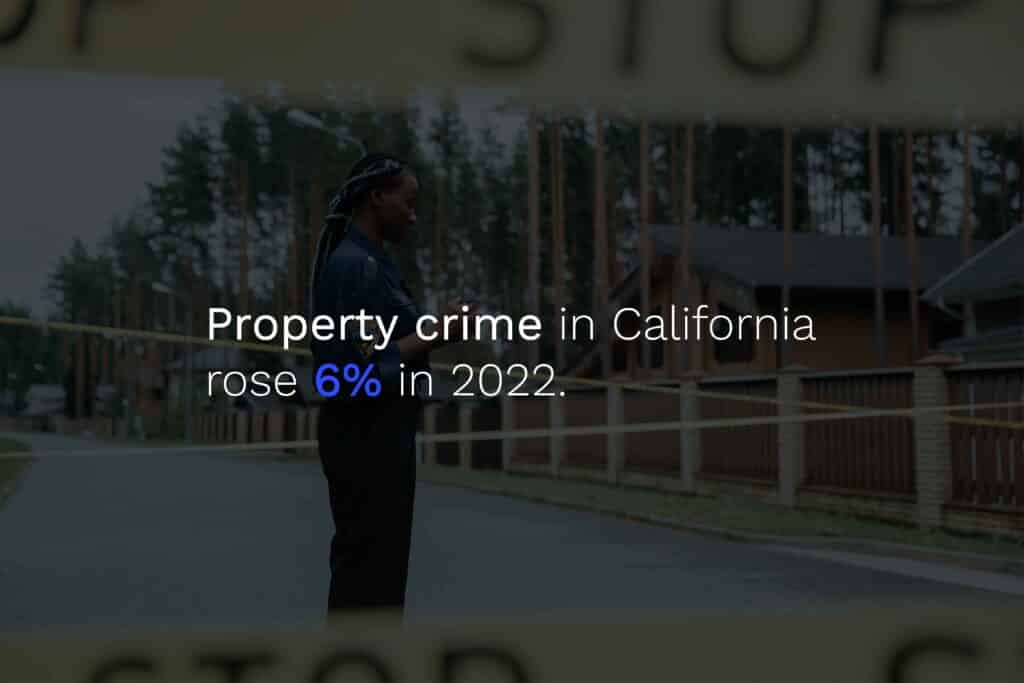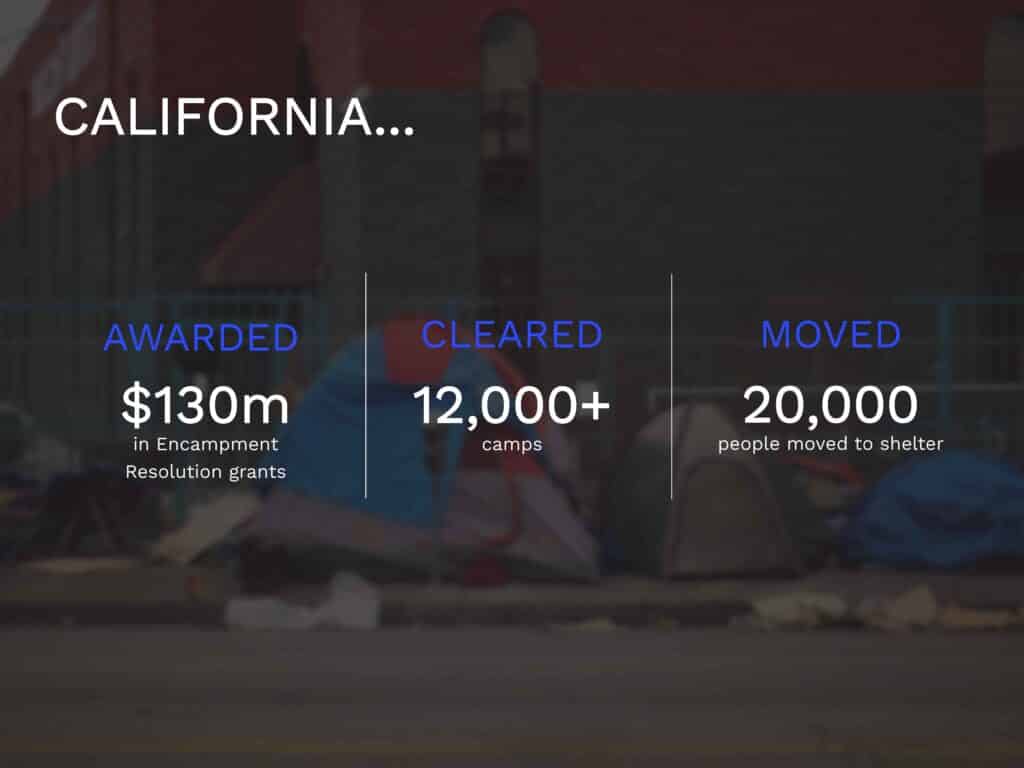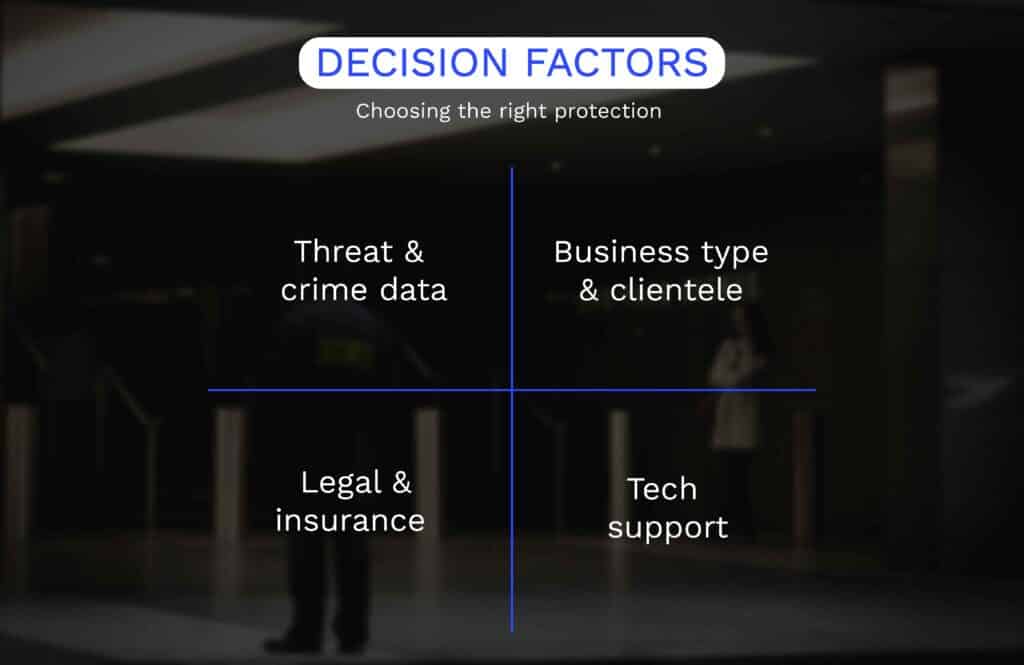Top Security Threats to California Commercial Properties in 2025

Table of Contents
Table of Contents
Table of Contents
Overview: Evolving Security Challenges for California Businesses in 2025
California business owners and property managers are facing a shifting security landscape in 2025. While overall crime rates in the state remain near historic lows (CalMatters analysis of FBI data), certain threats to commercial properties have surged and demand renewed attention. Organized retail theft rings, vandalism, homelessness-related trespassing, and large event crowds are testing the limits of traditional security measures. Recent legislative changes and regional crime trends are also reshaping how companies approach safety and private security services in California. In this report, we delve into the top security threats facing California commercial properties and discuss how businesses can mitigate risks using both armed and unarmed security, technology, and updated best practices.
Retail Theft in California: 2025 Trends and Business Impact
California retail theft incidents have spiked post-pandemic. Reported shoplifting rose 39% in 2023, reaching the highest levels since 2000. Commercial burglaries fell 9% in 2023 but remain above pre-pandemic levels. Source: California DOJ data via PPIC.

The surge is concentrated: Los Angeles ranked #1 worst city for organized retail theft in 2023, and the San Francisco–Oakland metro ranked #2, according to the National Retail Federation. Sacramento tied for #7. Four counties (Los Angeles, Alameda, Sacramento, San Mateo) accounted for 90%+ of the statewide increase. Businesses in these hotspots are turning to high-resolution surveillance, access-controlled entry, and on-site guards (often armed) to deter theft.
The financial impact is massive: U.S. retailers lost over $112 billion to shrink in 2022, with California stores a leading contributor. One example: an August 2023 Los Angeles “flash mob” looted a Nordstrom of roughly $300,000 in merchandise in under a minute.
State Response:
In 2024, California launched multiple anti-ORC initiatives. According Gov.ca.gov to Governor Newsom directed $267 million in grants to 55 police agencies to combat retail theft. The Organized Retail Crimes Task Force in Los Angeles and CHP’s Real-Time Organized Retail Crime Center are coordinating enforcement. AG Rob Bonta charged 22 suspects in a $1M dispensary burglary spree**.** The Legislature passed 10 new retail theft bills in 2024, and voters approved Proposition 36 in Nov. 2024 to toughen penalties for repeat theft.
Retail Response:
Luxury malls and high-risk retailers are adopting Armed Security in Los Angeles to deter ORC crews. Lower-risk sites may choose Unarmed Security in Orange County to maintain a welcoming atmosphere while increasing presence.
Vandalism and Property Damage: Costly Incidents on the Rise

- Long Beach launched Visual Improvement Grants in 2023 to reimburse vandalism repairs after noting rising property crimes.
- Hemet offered small-business vandalism relief funds for broken windows and graffiti cleanup.
Prevention tactics:
- Environmental design: Anti-graffiti coatings, shatter-resistant glass film, and improved lighting.
- Surveillance & alarms: Visible CCTV and alarm signage deter opportunists.
- Private security patrols: Temporary security deployments during peak risk periods (holidays, civil unrest).
- Rapid cleanup: Immediate graffiti removal sends a “watched property” message.
Vandalism often precedes theft; a broken window today can be a burglary tomorrow. A visible security presence and prompt repairs lower your risk profile.
Homeless Encampments and Trespassing: A Sensitive Security Challenge
California’s homelessness crisis spills into commercial zones. Encampments by storefronts or in loading docks create trespassing, safety hazards, biohazards, and reputational issues. The legal landscape shifted with Grants Pass v. Johnson (U.S. Supreme Court, June 2024), allowing cities to enforce camping bans even if no shelter is available. Cities like San Francisco vowed to ramp up encampment removals.
The state is investing too: California awarded $130.7 million in Encampment Resolution grants in 2024, part of a $1 billion Encampment Resolution Fund clearing 12,000+ camps and moving ~20,000 people into shelter since 2021.
 Best practices for businesses:
Best practices for businesses:
- Consistent patrols & engagement: Early, humane interaction can prevent entrenched camps.
- Trespass affidavits & signage: File Trespass Letters of Consent with local police; post “No Trespassing” signs.
- Partner with outreach teams: Many BIDs use outreach specialists alongside security.
- Stay legal: Forced removal without due process risks liability. Cities often require storage of belongings and service offers during sweeps. Consult counsel for private-property protocols.
Balancing compassion and safety is key. Your policies should protect staff and patrons while respecting vulnerable individuals’ rights. Coordination with authorities (and documentation of issues) keeps you compliant and effective.
Event Security and Crowd Control: Safeguarding Large Gatherings
California’s return to large in-person events (concerts, conferences, sports) means crowd control and event security are critical again. The risks range from gate-crashing mobs and fights to active shooter or terror threats.
Look at Coachella 2023:
500,000+ attendees over two weekends, with over 10,000 staff members deployed (security, medics, support). Screening checkpoints, drones, on-site law enforcement, and rehearsed emergency plans are standard. Even so, each year sees fence-jumpers, medical emergencies, and altercations. This is proof that security must be as robust as the show.
For corporate events and smaller festivals:
- Access control: RFID wristbands, digital ticketing, staffed chokepoints.
- Visible security: Mix of uniformed guards and plainclothes officers; armed teams for high-risk events.
- Surveillance & comms: CCTV, drones, interoperable radios among guards, staff, and responders.
- Emergency action plans: Evac routes, medical tents, stop-show protocols, staff briefings.
Local codes (fire, occupancy) and post-pandemic health rules add layers of compliance. Regional nuances matter: protests in LA/SF, beach events in OC, stadium brawls statewide. Our directory includes specialists in Event Security in Orange County and beyond.
A secure event protects both people and brand reputation. With California hosting global spectacles like the 2026 FIFA World Cup and 2028 Olympics, expectations for event safety are soaring.
Armed vs. Unarmed Security Guards: Choosing the Right Protection
Should you hire armed or unarmed guards? The answer depends on threat level, environment, and liability tolerance.
Armed Security Guards
Licensed to carry firearms, they undergo extensive firearm and use-of-force training. Many are ex-military or law enforcement. An armed presence deters violent crime (banks, jewelry stores, cannabis dispensaries). In active shooter or armed robbery scenarios, they can respond immediately.
Tradeoffs:
Higher hourly rates and insurance premiums, increased liability, and potential customer unease. Armed force incidents face intense scrutiny. Reserve for genuinely high-risk sites and hire highly vetted professionals.
Unarmed Security Guards
They offer deterrence, observation, de-escalation, and emergency response without firearms. Ideal for customer-facing environments where a friendly presence is preferred. They’re cheaper, require less insurance, and still manage access control, CCTV monitoring, escorts, and incident reporting. Limitation: they cannot neutralize armed threats; they rely on verbal skills and calling police.
 Decision factors:
Decision factors:
- Threat & crime data: High-crime area or high-value assets? Armed may be justified.
- Business type & clientele: Family retail vs. cash-heavy dispensary.
- Legal & insurance: Ensure BSIS guard cards and firearm permits; confirm coverage.
- Tech support: Radios, panic buttons, body cams enhance both armed and unarmed teams.
Many properties layer security: unarmed guards for daily presence, armed quick-response units for escalation.
Regulatory and Legislative Updates Affecting Private Security (2024–2025)
Stay current on laws shaping security operations:
- SB 1454 (2024) – Effective Jan 1, 2025. Expands BSIS oversight to proprietary (in-house) security teams. Formerly exempt nonprofits/churches must now register in-house guards and meet training requirements. Unlicensed security work is now an infraction. If you employ in-house guards, budget for guard cards, training, and compliance.
- Retail theft bills (2024) – e.g., AB 1708 reinstates felony options for serial shoplifters (aggregate theft >$950) and criminalizes possession of theft tools. CHP launched a Real-Time ORC Center. Retailers should tighten evidence capture (video, reports) to aid prosecution.
- Proposition 36 (2024) – Voter-approved rollback of parts of Prop 47. Tougher penalties for repeat property crimes and drug offenses, enabling felony charges for serial theft or ORC-linked thefts even under $950. Document incidents and coordinate with law enforcement; prosecutors have new tools.
Other ongoing rules: every guard must be BSIS licensed; armed guards need firearm permits and requalifications. Guards operate under private person’s arrest authority and must promptly hand suspects to police. Some cities (e.g., San Francisco nightlife, Los Angeles alarm permits) have extra requirements.
Privacy & tech:
California’s [**CCPA](https://oag.ca.gov/privacy/ccpa#:~:text=Updated on March 13%2C 2024,personal information collected about them.)/[CPRA](https://thecpra.org/)** affects camera footage and data retention. If using facial recognition, note cities like San Francisco ban it for police; private use is legally gray and contentious. Post signage and set retention policies.
Review your security program with counsel or a consultant after new laws take effect. Compliance improves effectiveness and reduces liability.
Conclusion: Proactive Security Planning for 2025 and Beyond
California commercial properties face myriad security threats in 2025, but none are insurmountable. Retail theft and ORC demand hardened targets and tight law enforcement coordination. Vandalism and petty crime require vigilance and quick remediation. Homelessness near properties poses legal and ethical challenges best handled with compassionate, lawful strategies. Major events require meticulous security planning. Choosing between armed and unarmed guards comes down to risk assessment and context.
The theme is proactivity. Audit your risks now: local crime trends, physical safeguards, staff training, customer safety perceptions. Build a layered plan—modern alarms/cameras, reputable security patrols, and clear emergency procedures. California offers a robust ecosystem of security firms and tech vendors.


 Best practices for businesses:
Best practices for businesses: Decision factors:
Decision factors:


